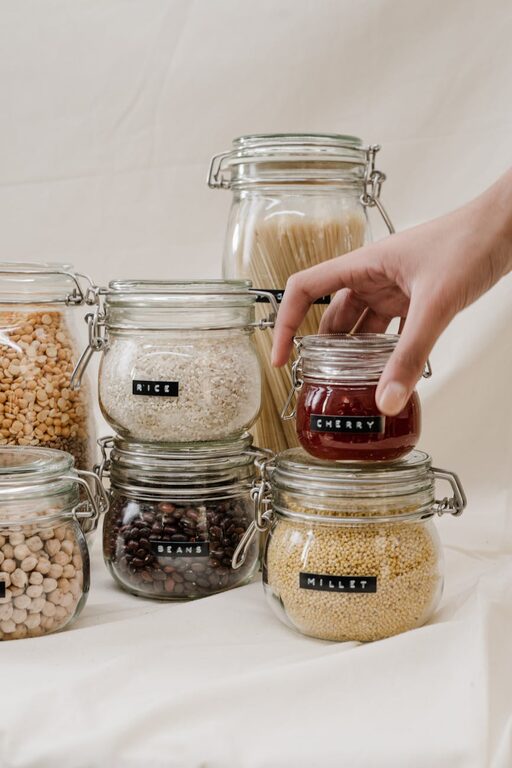Planning meals from pantry staples is a smart way to simplify cooking, save money, and reduce waste. Your pantry is a treasure chest of ingredients that can form the base of countless delicious meals—if you know how to use them effectively. Whether you’re facing a busy week or want to build a habit of cooking at home, learning to plan meals from what you already have on hand is an invaluable skill.
In this guide, we’ll walk through how to assess your pantry, generate meal ideas, and organize meals around staple ingredients. By the end, you’ll feel confident turning basic pantry items into flavorful, nutritious dishes.
—
What Are Pantry Staples?
Pantry staples are non-perishable or long-lasting food items typically stored in your kitchen cupboard. Examples include:
– Canned goods: beans, tomatoes, vegetables, tuna
– Dry goods: rice, pasta, lentils, flour, oats
– Baking essentials: sugar, baking powder, yeast
– Spices and herbs
– Oils and vinegars
– Nut butters and sauces
– Broths or bouillon cubes
Having these basics stocked lets you whip up meals without a last-minute grocery run.
—
Step 1: Take Inventory of Your Pantry
Before you start planning meals, it’s helpful to know exactly what you have. Here’s how to do a pantry inventory:
- **Clear a workspace:** Pull everything out so you can see your supplies.
- **Check expiration dates:** Discard anything expired or spoiled.
- **Group like items:** Keep canned beans, grains, spices, and so forth together.
- **Note quantities:** Write down or snap a photo of what you have.
Keeping a list or using an app can save time when planning future meals.
—
Step 2: Understand Meal Components
Most meals consist of a few basic components:
– Protein: canned beans, lentils, canned tuna, nuts, or shelf-stable tofu
– Carbohydrates: rice, pasta, potatoes, or bread
– Vegetables: canned, frozen, or fresh (if you have some on hand)
– Flavorings: spices, herbs, oils, vinegars, sauces
Aim to mix and match from these groups. For example, combine rice (carb) with canned black beans (protein), sautéed canned tomatoes (vegetable), and chili powder (flavor) for a quick Mexican-inspired bowl.
—
Step 3: Build a List of Simple Meal Ideas
Here are some meal ideas based on common pantry staples:
1. One-Pot Pasta
– Pasta
– Canned tomatoes
– Garlic powder or dried herbs
– Olive oil or butter
– Optional: canned tuna or beans for protein
2. Rice and Beans Bowl
– Rice
– Canned beans (black, kidney, chickpeas)
– Spices (cumin, paprika)
– Salsa or hot sauce
– Optional: canned corn or olives
3. Lentil Soup
– Lentils
– Broth or water + bouillon
– Canned diced tomatoes
– Onion powder, garlic powder, bay leaf
– Optional: dried herbs
4. Chickpea Curry
– Canned chickpeas
– Coconut milk (or substitute broth)
– Curry powder or paste
– Canned tomatoes
– Rice or flatbread
5. Tuna Salad
– Canned tuna
– Mayonnaise or olive oil
– Mustard or lemon juice
– Canned corn or beans
– Bread or crackers
When you get creative, you can swap ingredients depending on what’s available.
—
Step 4: Plan Your Weekly Menu
Once you have your meal ideas, try planning a week’s worth of meals using your pantry staples with this approach:
– Pick diverse meals: Choose different protein and carb combinations to avoid repetition.
– Combine pantry and fresh items: If you have some fresh vegetables or frozen items, incorporate them to add freshness and nutrients.
– Cook in batches: Prepare bigger portions and store leftovers for quick lunches or dinners.
– Prep ingredients in advance: Soak lentils or beans if needed, or pre-measure spices.
Write down or use a digital calendar to keep track of which meals you’ll prepare on which days. This reduces decision fatigue and helps you stay organized.
—
Step 5: Shop Smart and Restock
Building a pantry around essential staples ensures you’re ready for meal planning at any time. When you do grocery shop, consider:
– Buying in bulk for items you use frequently
– Choosing versatile ingredients that can be used in multiple dishes
– Rotating items with clear expiration dates to keep your stock fresh
– Adding some ready-to-eat fresh produce for balance
By maintaining a thoughtfully stocked pantry, meal planning becomes quick and stress-free.
—
Tips to Make Meal Planning from Pantry Staples Easier
– Keep staple recipes handy: Save recipes you enjoy for quick reference.
– Use simple seasoning blends: Pre-mixed seasoning packets save time adding flavor.
– Experiment with canned vegetables: Don’t overlook canned corn, green beans, or artichokes.
– Add texture: Toast nuts or breadcrumbs to add crunch to dishes.
– Embrace leftovers: Repurpose the next day’s meals to minimize waste.
—
Final Thoughts
Meal planning from pantry staples is a practical way to minimize stress in the kitchen while promoting creativity and resourcefulness. With a well-stocked pantry and some basic planning, you can enjoy wholesome, satisfying meals any day of the week without last-minute trips to the store.
Start by taking inventory, brainstorming simple recipes, and mapping out your week with staple ingredients. Over time, you’ll find it easier—and more enjoyable—to turn pantry basics into a variety of tasty dishes. Happy cooking!

